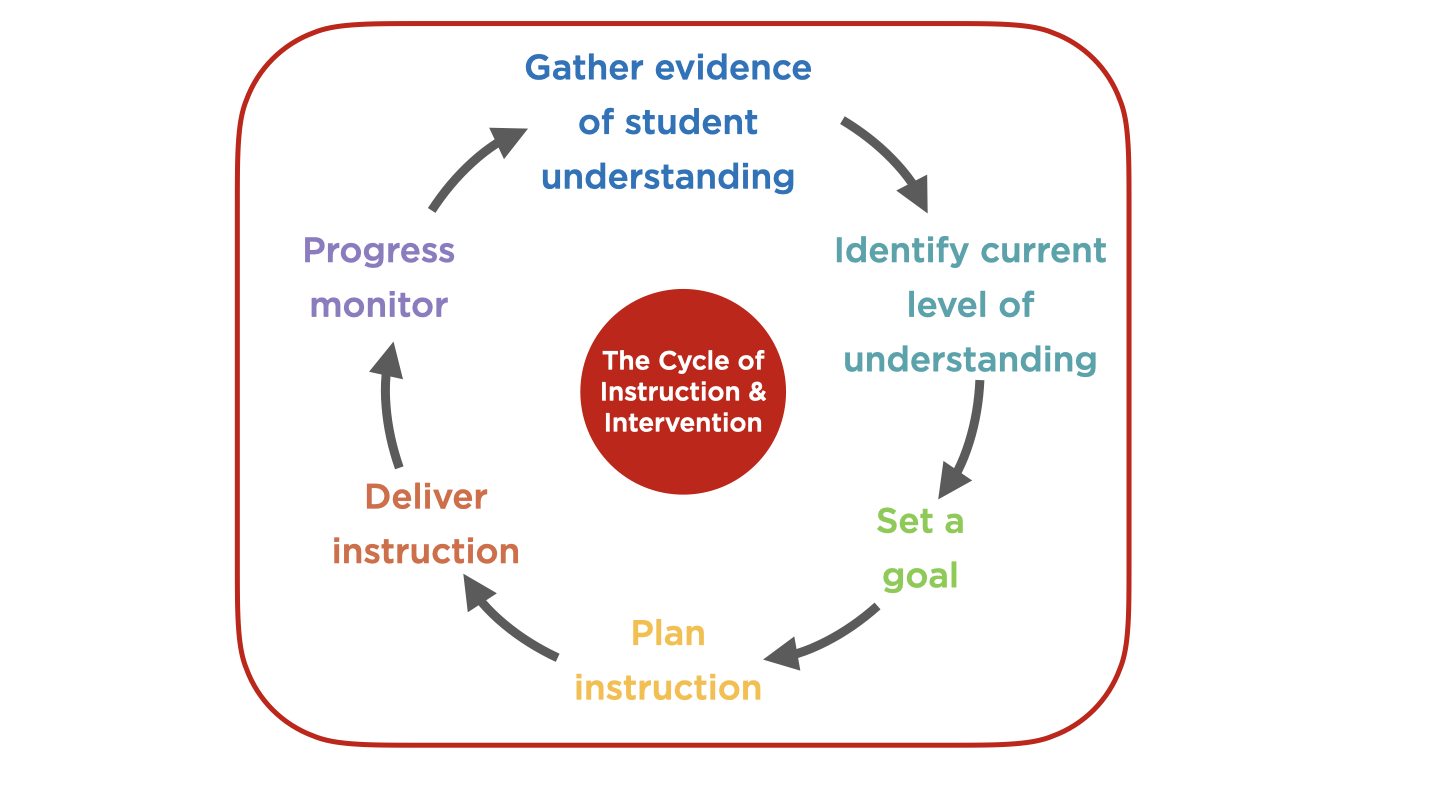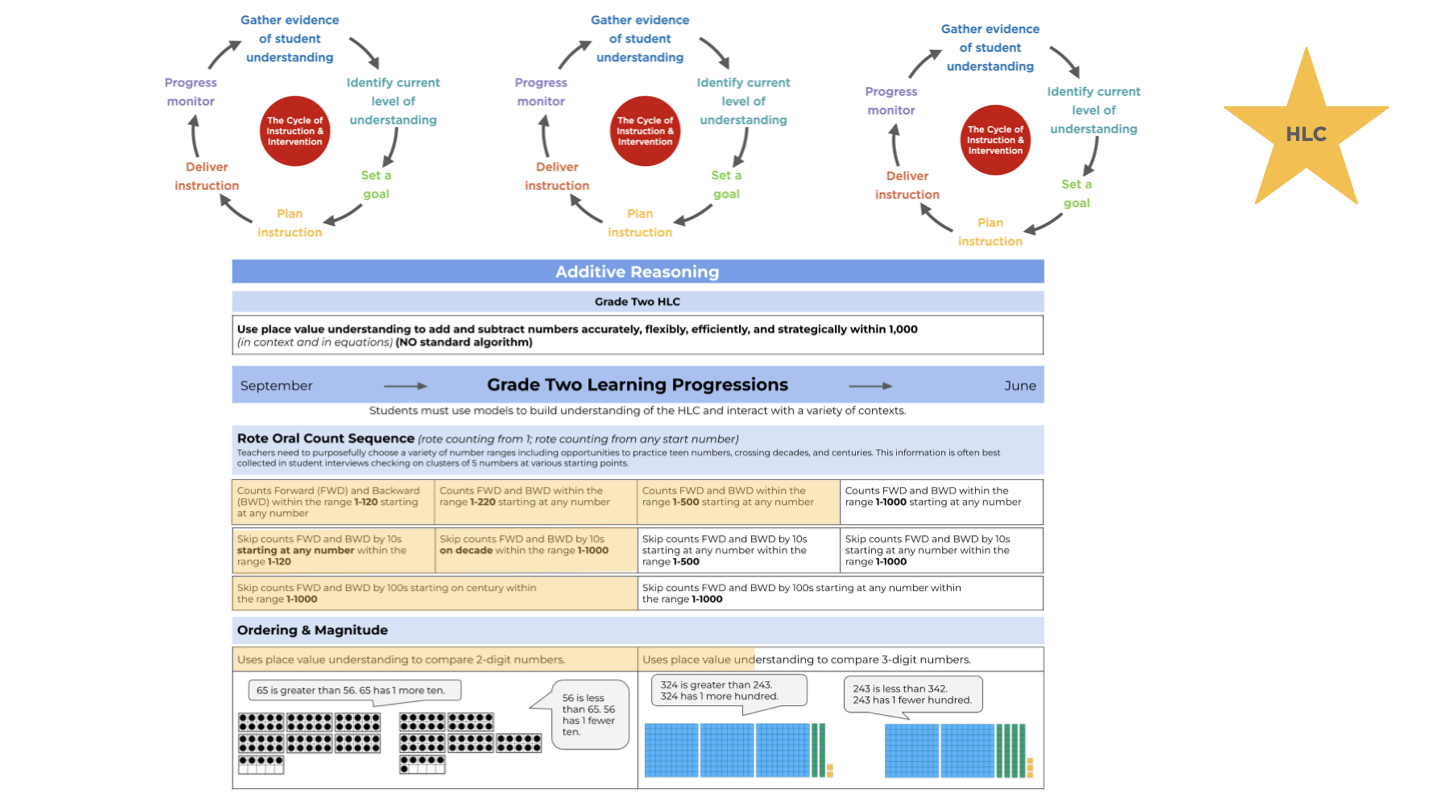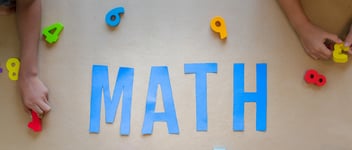.png)
What does an intervention cycle look like?
All educators can frame the process of their work with students as a cycle. All Learners Network (ALN) particularly recommends this specific framing to special educators and interventionists, or any teacher working with students in small groups.
Using a cycle of instruction provides both educators and students a structured process for reflecting on growth and moving forward in math understanding.
It actually functions as a rapid cycle of inquiry, where we are seeking information about our students’ thinking, planning responsive instruction, and monitoring growth in a continuous cycle.
The intervention cycle looks like this:

As we go through the cycle, we will think of it in the context of providing intervention or Tier 2 small group instruction. You can also apply this model more generally to your whole group classroom teaching!
First, we gather evidence of student understanding. This often comes from formative assessments or other student work samples and teacher observations. Often we use student interviews to dig deeper. This helps us identify what students CAN do - their current level of understanding. When that evidence indicates that there is some difficulty or misconception present, it is time to continue forward in the cycle.
Using the evidence gathered through your formative assessments, you can use the High Leverage Concepts (HLCs) Progressions to identify what the student CAN do and then find the next step along the progression. This allows you to set a specific, measurable, and actionable goal and plan for intervention instruction and activities. We always aim to set strength-based goals, focusing on what a student can do and building from there. In this model, we are talking about small learning targets that will lead to a bigger overall goal, such as the High Leverage Concept for that grade level or an Individualized Education Program (IEP) goal. To learn more about the importance of setting small learning targets or objectives nested inside larger goals, check out this blog post.
After identifying a goal or mini-target, you can use the models and strategies identified in the HLCs and HLC Progressions to plan instructional activities that include problem-solving, games, and skills practice that will help move students toward that goal.
Then the intervention takes place! It can be helpful to think of these cycles in 4-6 week chunks. Instruction may take place in a 1:1 setting or small group. This should not take place during core instruction, but rather during a dedicated intervention block and/or during the small group time in Math Menu.
As you go through your intervention work, it is important to frequently monitor student progress toward their goal. Just like in your initial formative assessment, your progress monitoring should help you identify what the student CAN do, how they are growing, and where they need to go next.

As your progress monitoring leads to additional evidence of student understanding, you can begin the cycle again, using evidence of student understanding to set new goals and move students forward along the HLC Progression.
It is important to think of this work as a cycle rather than a linear process. Intervention isn’t something that just gets a student from point A to point B. We don’t want to set a goal for the year and just work toward it broadly, hoping that an end of year assessment will show proficiency. Even when we have a larger goal, like an IEP goal, we need to set smaller goals along the way to work through this cycle of continual gathering of evidence, exploring theories, instruction, and progress monitoring.





%20-%20Rapid%20Cycle%20of%20Inquiry%20Blog.png?width=352&name=Hero%20Images%20(WebsiteBlogEmails)%20-%20Rapid%20Cycle%20of%20Inquiry%20Blog.png)
